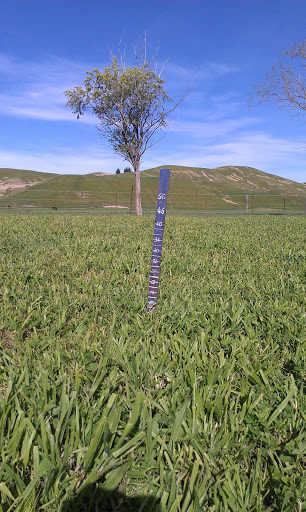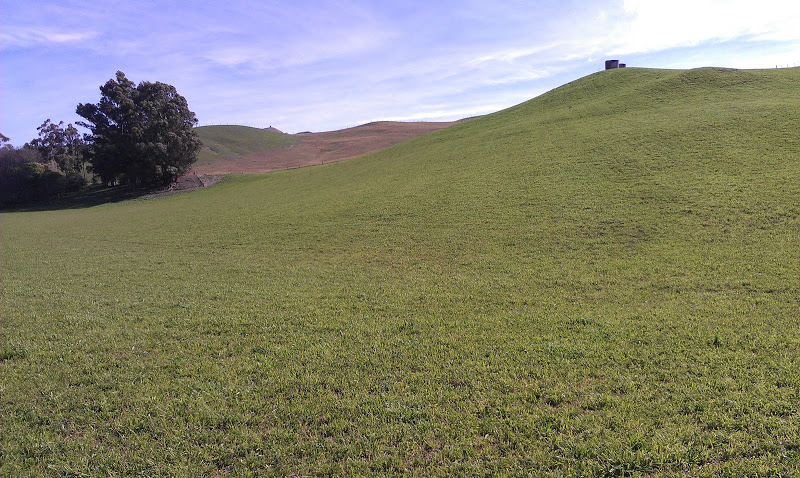 The ewes and lambs were tailed off this paddock on the 6th September, and the paddock was being spelled when I visited on the 14th September. You can see by the photo below that all the species in the mix are showing signs of regrowth, especially the Prairie Grass component.
The ewes and lambs were tailed off this paddock on the 6th September, and the paddock was being spelled when I visited on the 14th September. You can see by the photo below that all the species in the mix are showing signs of regrowth, especially the Prairie Grass component.
Lambs are weighed individually at tailing every year at Bonavaree (the lamb weight data will be made available in later blogs). Fraser has had a quick look at the figures, and been able to make a quick comparison with last year. His gut feeling is that the lambs are approximately 2 weeks behind what they were last year. And as a consequence he is noticing that the late lambing ewe’s offspring are fast catching up to the size of the lambs from the earlier lambed ewes. This is due to the extremely wet conditions (reported in earlier blogs) that Bonavaree endured in their peak of lambing of the first cycle mated ewes.
Fraser said the lambs appear to be really shooting ahead now, but the check they have received early on will mean lambs will probably not reach the growth rate yardstick of 400 g/head/day this year. Fraser admits it is frustrating when so much work has gone in to get the ewes in peak lambing condition, and then have a disappointing result due to rough weather. He concedes (with a smile) that “that’s the way of farming”.
The plans for this paddock is to return in a couple of weeks with a larger mob of 200 ewes plus lambs, and then this paddock will go into a more formal grazing rotation of 35 days between grazing. The Bonavaree mix paddocks are usually managed for the lucerne content, and the grazing regime dictated by maximising lucerne growth. However, Fraser may return quicker to this paddock because the Prairie Grass component of this paddock is looking excellent. Another reason for returning early to this paddock is he may need to control the competition of the Prairie Grass on the lucerne and plantain.
